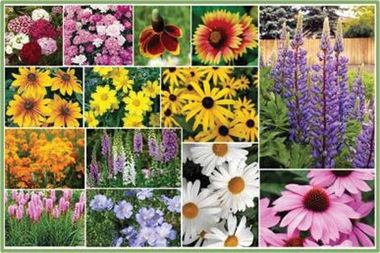Gayly gardeners: Keeping up with “The Perennials”

by David Womak
Special to The Gayly
In gardening, there are plenty of practical benefits to perennials. Enhancing the curb appeal of your home and business, solving pesky landscape bare areas and providing a valuable habitat for beautiful birds and butterflies are all excellent reasons to justify getting out into your garden and getting your hands dirty.
Once you spend some much-needed quality time in your garden, you'll realize it's good for your mind, body and spirit, too. It's hard to be stressed out when you’re engulfed in a spectrum of color and delightful fragrances.
As your garden changes through the year from new shoots to lush leaves, abundant blooms and striking seed heads by fall - they’ll help to keep you in touch with the rhythm of the seasons, even if you spend most of your days indoors. Your garden is also a glorious opportunity to express your creativity and even your special personality.
So, what are you waiting for? It’s time to get growing with “The Perennials”.
A perennial, in the broadest horticultural definition, is any plant that lives for three or more years. But, when gardeners like ourselves talk about perennials, they almost always mean flowering garden plants with stems that are herbaceous, fleshy rather than woody, and that usually die down to the soil’s surface before winter, while the roots remain alive and ready to send up new growth the next season.
Some perennials (like humans) change their lifestyles to conform to their surroundings. This creates color in uninterrupted but ever-changing patterns from April to November.
Let’s add just another challenge to our gardening; try keeping your different types of perennials from over crowding one another. Some are invasive and desirable at the same time, like chrysanthemums which can spread quick and quiet. The mammoth sunflower and the explosive oriental poppy can consume an area in one season. Keep in mind perennials that go on their own when you are planning a season with a succession of blooms.
Here are a few popular perennials for a season of blooms: Springtime - Double bearded irises, a nice soft red spiked lupine, wild in nature spotted tiger lilies, on their own bachelor buttons, reseeding wild petunias and violets.
Early summer - black-eyed Susans, shasta daisy, German chamomile is plentiful and smells nice too, pretty peonies and changing bloom patterns columbines. A true favorite coreopsis, short and sweet Williams (dianthus) and ever pleasing lantana.
Lastly, Summer to Fall - hollyhocks, tall and lanky phlox, hummingbird mint, an occasional garden mum, crazy looking blooms like bee balm. Purple coneflower (Echinacea), miss rudbeckia, salvia red or blue and a variety of color yarrow.

Let's chat about the care of these perennials, shall we?
First: Cultivation in early spring no more than an inch or two and work the entire bed area, this will up root any unwanted weeds and some grasses. This will allow air to get in the soil which is essential for healthy growth. Gently work in 5-10-5 blend nitrogen-phosphorus-potassium, around each plant grouping; using a tablespoon dose on each grouping; this is a good starting portion.
Second: Mulching is needed to conserve moisture and reduce weed population. There is no special type to advise on; they all do their part. Some materials can vary depending on the purpose and location. My grandmother used shredded newspaper then grass clippings on top. Cheap, but it works and there are multiple benefits to mulching.
Third: Staking supports those plant's that might be blown over or snapped off by the wind or even splattered with mud when they bend too low. Which style of support you will depend on is sure to work, and any type of materials you use might need to withstand our notorious thunderstorms and occasional twister.
We take our cues from Mother Nature as we watch for plants to tell us when they are not happy in their environment. Not enough water (wilting, no growth), too much sun (leathery, burned leaves), no wind protection (defoliation), too lean soil (stunting, nutritional deficiency) are some of the ways they communicate. So, in these cases try to make the situation right, move them to a better spot more to their liking.
Get out there and make a difference all you gardeners and remember that dirty nails are popular in your garden.
Copyright 2017 The Gayly – May 9, 2017 @ 11 a.m.





